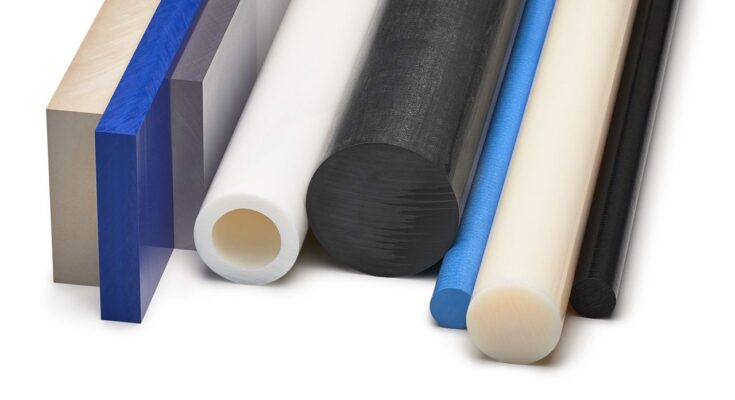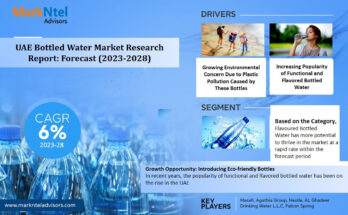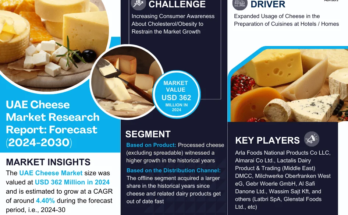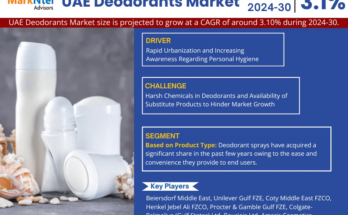Global Engineering Plastics Market is projected to grow at an impressive rate through 2028 due to increasing demand in the automobile sector. At the end of fiscal year 2022, around 3.7 million passenger vehicles were produced across India.
Engineering plastics are frequently used to produce mechanical parts, containers, and packaging materials. Due to their high mechanical strength, engineering plastics quickly replace metals and wood in the construction and automotive industries. These components lighten the car as a whole and improve fuel economy. They manufacture vehicle exterior and interior parts and elements for the drivetrain. Due to its excellent resilience to various environmental conditions like chemicals, high temperatures, and abrasion, engineering plastic is also utilized throughout the electronic sector. It is, therefore, the perfect material for producing consumer electronics.
The COVID-19 epidemic has hindered the market because lockdowns, societal barriers, and trade bans have caused significant disruptions to global supply chain networks. Due to the stoppage of operations, the automobile and construction industries have seen a dip; nonetheless, the sector had growth in 2021. According to the International Organization of Motor Vehicle Manufacturers (formally known as OCIA), the automotive industry saw a favorable growth rate of 8.4% in the first nine months of 2021 compared to the same period in 2020. On the other hand, the packaging and medical industries are experiencing increased demand for engineering plastics due to the need for protective shields, masks, and PPE kits, as well as improved health awareness.
Growing Demand from Automotive and Transportation
Due to incredible structural stiffness, engineering plastics quickly replace metals and wood in the building and automotive industries. These parts make the car lighter overall, increasing fuel efficiency. They provide components for the drivetrain and exterior and interior features for automobiles. For instance, SABIC PP compound G3430X and SABIC PP compound G3440X grades, two new glass fiber-reinforced polypropylene compositions, were announced in August 2022. For a car’s demanding interior, exterior, and under-hood requirements, they provide increased performance.
Substitute of Metals
Due to their lightweight properties, engineering plastics are frequently utilized as preferred substitutes for metal and ceramic. They provide improved load capacity, mechanical characteristics, thermal stability, and lifespan and offer design flexibility. Nylon 6, polysulfide, and polyamides (PA), polycarbonates (PC), and polysulfide and polyamides (PSU) are among the engineering plastic types that are frequently used. They are widely employed in various sectors to create optical discs, ski boots, dashboard trim, and car bumpers.
Growing Technological Advancement
Due to the technological advancements that will lead to engineering plastics being used, the construction, medical, and consumer segments will all have substantial growth for polycarbonate. Still, overall sales of CDs and DVDs will continue to drop, causing them to follow the industry average. The quickest growth will be seen in engineering plastics with smaller volumes, including polyphenylene sulfide, sulfone polymers, fluoropolymers, and polyether ether ketone. The overall demand will be driven by specialized applications in developed markets and use in innovative goods such as enhanced batteries, solar modules, and medical implants. These resins will be utilized more frequently in the electrical, electronic, and automotive industries because they are frequently required to meet high-temperature requirements and because the cost premium can be rationalized from an economic standpoint.
Growing purchasing power in developing nations is a significant factor, hence the demand for engineering plastics. The main forces behind this are, to name a few, hitherto untapped prospects to replace metals not only in cars but also in household goods, buildings, and infrastructure.
Recent Developments
- In February 2021, Ather Energy, an EV manufacturer in India. Invested USD86.5 million to establish a two-wheeler factory in Hosur (Tamil Nadu) which reportedly can be produced annually 0.11 million at the Ather Energy facility. It is predicted that the growth of the Electric Vehicle (EV) industry will increase demand for engineering plastics in India. In February 2022, BASF acquired Solvay’s PA66 business and will begin its business in several polyamides & poly-phthalimide (PPA) grades in Europe.
Download FREE Sample Report @ https://www.techsciresearch.com/sample-report.aspx?cid=3363
Market Segmentation
The global Engineering Plastics market is segmented by type, and by end-use. Based on type, the market is segmented into acrylonitrile butadiene styrene (ABS), polyamide (PA), polycarbonate (PC), thermoplastic polyester (PET/PBT), polyacetal (POM), fluoropolymer and others. Based on end use, the market is segmented into automotive & transportation, electrical & electronics, industrial & machinery, packaging, consumer appliances and others
Market players
Covestro AG, Solvay S.A., LG Chem, DowDuPont Inc., Evonik Industries, SABIC, Lanxess AG, Chevron Corporation, LyondellBasell Industries N.V., and BASF SE are some of the key market players.
| Attribute | Details |
| Base Year | 2022 |
| Historic Data | 2018 – 2021 |
| Estimated Year | 2023 |
| Forecast Period | 2024 – 2028 |
| Quantitative Units | Revenue in USD Million, Volume in metric tons, and CAGR for 2018-2022 and 2023-2028 |
| Report Coverage | Revenue forecast, Volume Forecast, company share, competitive landscape, growth factors, and trends |
| Segments Covered | · Type
· End Use |
| Regional scope | North America; Europe; Asia Pacific; South America; Middle East & Africa |
| Country scope | United States, Canada, Mexico; China, India, Japan, South Korea, Australia; Germany, France, United Kingdom, Italy, Spain; Brazil, South Africa, UAE, Saudi Arabia, Turkey, and Egypt. |
| Key companies profiled | Covestro AG, Solvay S.A., LG Chem, DowDuPont Inc., Evonik Industries, SABIC, Lanxess AG, Chevron Corporation, LyondellBasell Industries N.V., and BASF SE |
| Customization scope | 10% free report customization with purchase. Addition or alteration to country, regional & segment scope. |
| Pricing and purchase options | Avail customized purchase options to meet your exact research needs. Explore purchase options |
| Delivery Format | PDF and Excel through Email (We can also provide the editable version of the report in PPT/Word format on special request) |
Report Scope:
In this report, Global Engineering Plastics Market has been segmented into the following categories, in addition to the industry trends, which have also been detailed below:
- Global Engineering Plastics market, by type:
- Acrylonitrile Butadiene Styrene (ABS)
- Polyamide (PA)
- Polycarbonate (PC)
- Thermoplastic polyester (PET/PBT)
- Polyacetal (POM)
- Fluoropolymer
- Others
- Global Engineering Plastics Market, by end use industry:
- Automotive & Transportation
- Electrical & Electronics
- Industrial & Machinery
- Packaging
- Consumer Appliances
- Others
- Global Engineering Plastics Market, by region:
- North America
- United States
- Canada
- Mexico
- Europe
- France
- Germany
- United Kingdom
- Italy
- Spain
- Asia-Pacific
- China
- India
- Japan
- South Korea
- Australia
- South America
- Brazil
- Middle East & Africa
- North America
- South Africa
- Saudi Arabia
- UAE
- Turkey
- Egypt
Competitive Landscape
Company Profiles: Detailed analysis of the major companies in Global Engineering Plastics Market.
Available Customizations:
With the given market data, TechSci Research offers customizations according to a company’s specific needs. The following customization options are available for the report:
Company Information
- Detailed analysis and profiling of additional market players (up to five).
Related Reports
Hot Melt Adhesives Market – Future, Scope, Trends [2028]
Flotation Reagents Market [2028]: Analysis & Forecast
Table of Content-Engineering Plastics Market
- Product Overview
1.1. Market Definition
1.2. Scope of the Market
1.2.1. Markets Covered
1.2.2. Years Considered for Study
1.2.3. Key Market Segmentations
- Research Methodology
2.1. Objective of the Study
2.2. Baseline Methodology
2.3. Key Industry Partners
2.4. Major Association and Secondary Sources
2.5. Forecasting Methodology
2.6. Data Triangulation & Validation
2.7. Assumptions and Limitations
- Executive Summary
3.1. Overview of the Market
3.2. Overview of Key Market Segmentations
3.3. Overview of Key Market Players
3.4. Overview of Key Regions/Countries
3.5. Overview of Market Drivers, Challenges, and Trends
- Voice of Customer
- Global Engineering Plastics Market Outlook
5.1. Market Size & Forecast
5.1.1. By Value & Volume
5.2. Market Share & Forecast
5.2.1. By Type (Acrylonitrile Butadiene Styrene (ABS), Polyamide (PA), Polycarbonate (PC), Thermoplastic polyester (PET/PBT), Polyacetal (POM), Fluoropolymer and Others)
5.2.2. By End Use Industry (Automotive & Transportation, Electrical & Electronics, Industrial & Machinery, Packaging, Consumer Appliances and Others))
5.2.3. By Region (North America, Europe, Asia Pacific, South America, Middle East & Africa)
5.2.4. By Company (2022)
5.3. Market Map
5.3.1. By Type
5.3.2. By End Use
5.3.3. By Region
5.4. Pricing Analysis
- North America Engineering Plastics Market Outlook
6.1. Market Size & Forecast
6.1.1. By Value & Volume
6.2. Market Share & Forecast
6.2.1. By Type
6.2.2. By End Use
6.2.3. By Country
6.3. Pricing Analysis
6.4. North America: Country Analysis
6.4.1. United States Engineering Plastics Market Outlook
6.4.1.1. Market Size & Forecast
6.4.1.1.1. By Value & Volume
6.4.1.2. Market Share & Forecast
6.4.1.2.1. By Type
6.4.1.2.2. By End Use
6.4.2. Mexico Engineering Plastics Market Outlook
6.4.2.1. Market Size & Forecast
6.4.2.1.1. By Value & Volume
6.4.2.2. Market Share & Forecast
6.4.2.2.1. By Type
6.4.2.2.2. By End Use
6.4.3. Canada Engineering Plastics Market Outlook
6.4.3.1. Market Size & Forecast
6.4.3.1.1. By Value & Volume
6.4.3.2. Market Share & Forecast
6.4.3.2.1. By Type
6.4.3.2.2. By End Use
- Europe Engineering Plastics Market Outlook
7.1. Market Size & Forecast
7.1.1. By Value & Volume
7.2. Market Share & Forecast
7.2.1. By Type
7.2.2. By End Use
7.2.3. By Country
7.3. Pricing Analysis
7.4. Europe: Country Analysis
7.4.1. France Engineering Plastics Market Outlook
7.4.1.1. Market Size & Forecast
7.4.1.1.1. By Value & Volume
7.4.1.2. Market Share & Forecast
7.4.1.2.1. By Type
7.4.1.2.2. By End Use
7.4.2. Germany Engineering Plastics Market Outlook
7.4.2.1. Market Size & Forecast
7.4.2.1.1. By Value & Volume
7.4.2.2. Market Share & Forecast
7.4.2.2.1. By Type
7.4.2.2.2. By End Use
7.4.3. United Kingdom Engineering Plastics Market Outlook
7.4.3.1. Market Size & Forecast
7.4.3.1.1. By Value & Volume
7.4.3.2. Market Share & Forecast
7.4.3.2.1. By Type
7.4.3.2.2. By End Use
7.4.4. Italy Engineering Plastics Market Outlook
7.4.4.1. Market Size & Forecast
7.4.4.1.1. By Value & Volume
7.4.4.2. Market Share & Forecast
7.4.4.2.1. By Type
7.4.4.2.2. By End Use
7.4.5. Spain Engineering Plastics Market Outlook
7.4.5.1. Market Size & Forecast
7.4.5.1.1. By Value & Volume
7.4.5.2. Market Share & Forecast
7.4.5.2.1. By Type
7.4.5.2.2. By End Use
- Asia-Pacific Engineering Plastics Market Outlook
8.1. Market Size & Forecast
8.1.1. By Value & Volume
8.2. Market Share & Forecast
8.2.1. By Type
8.2.2. By End Use
8.2.3. By Country
8.3. Pricing Analysis
8.4. Asia-Pacific: Country Analysis
8.4.1. China Engineering Plastics Market Outlook
8.4.1.1. Market Size & Forecast
8.4.1.1.1. By Value & Volume
8.4.1.2. Market Share & Forecast
8.4.1.2.1. By Type
8.4.1.2.2. By End Use
8.4.2. India Engineering Plastics Market Outlook
8.4.2.1. Market Size & Forecast
8.4.2.1.1. By Value & Volume
8.4.2.2. Market Share & Forecast
8.4.2.2.1. By Type
8.4.2.2.2. By End Use
8.4.3. Japan Engineering Plastics Market Outlook
8.4.3.1. Market Size & Forecast
8.4.3.1.1. By Value & Volume
8.4.3.2. Market Share & Forecast
8.4.3.2.1. By Type
8.4.3.2.2. By End Use
8.4.4. South Korea Engineering Plastics Market Outlook
8.4.4.1. Market Size & Forecast
8.4.4.1.1. By Value & Volume
8.4.4.2. Market Share & Forecast
8.4.4.2.1. By Type
8.4.4.2.2. By End Use
8.4.5. Australia Engineering Plastics Market Outlook
8.4.5.1. Market Size & Forecast
8.4.5.1.1. By Value & Volume
8.4.5.2. Market Share & Forecast
8.4.5.2.1. By Type
8.4.5.2.2. By End Use




